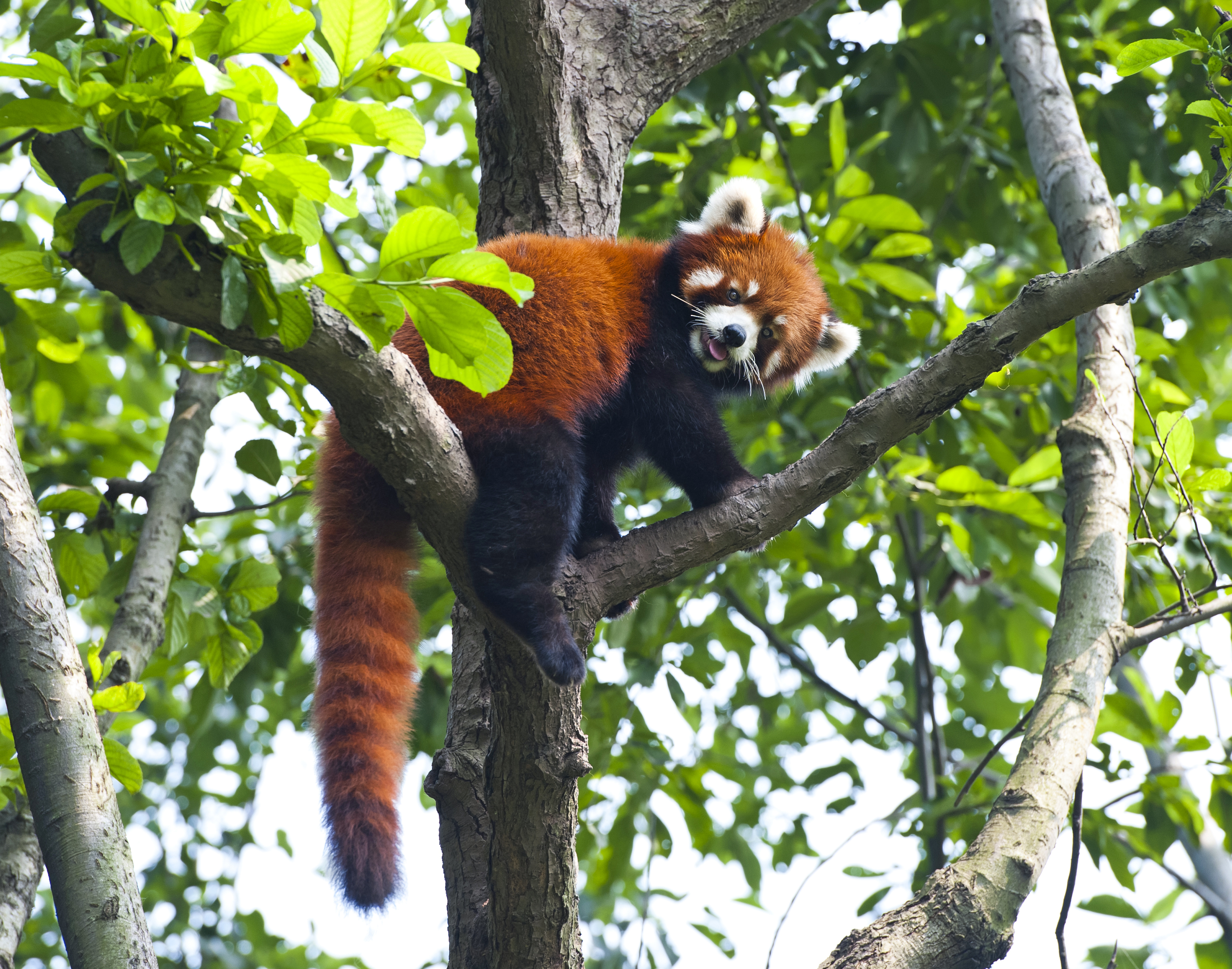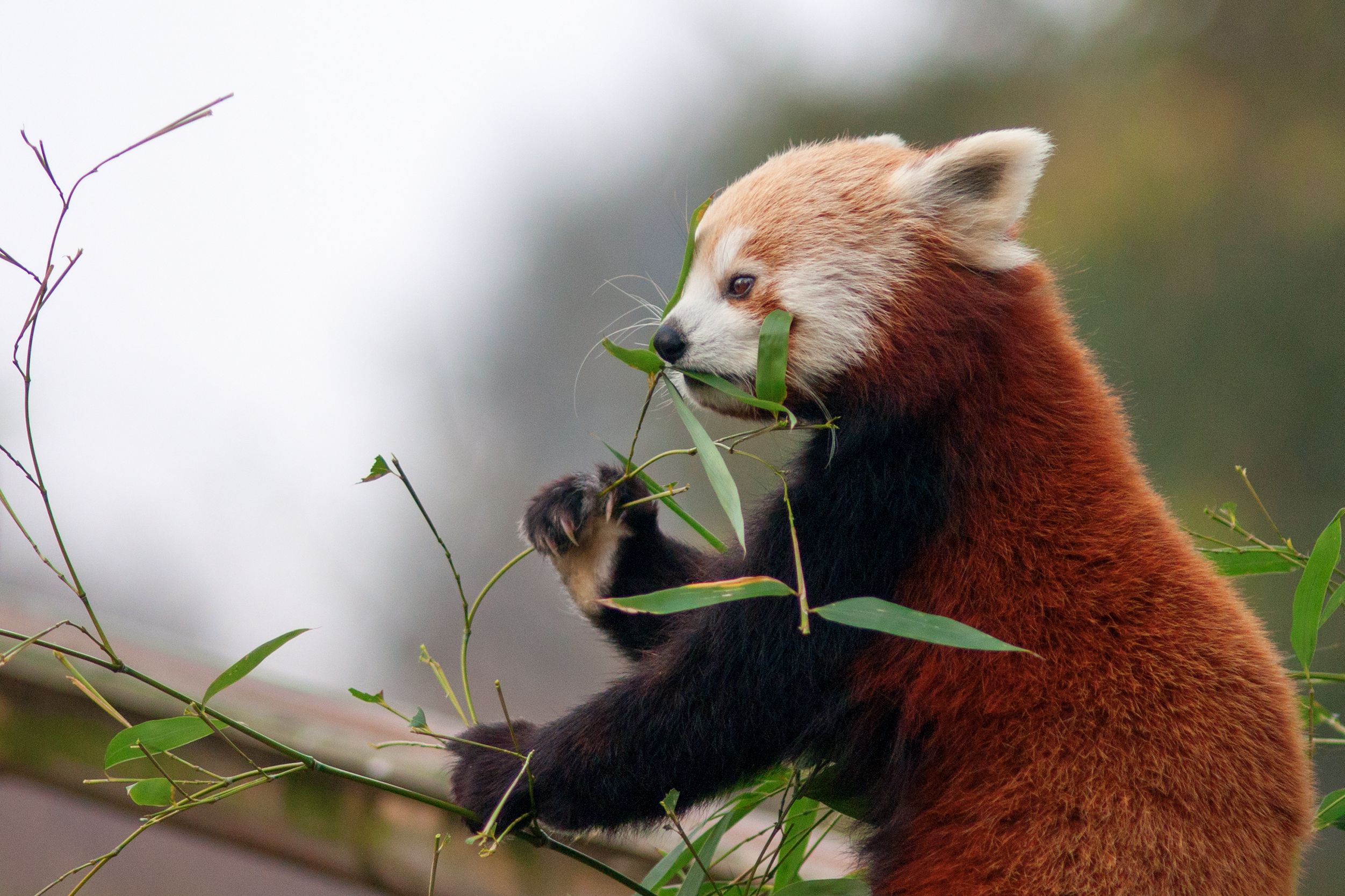Red panda is a medium-sized mammal with a red coat and a long, ringed tail. The red panda is also called the lesser panda, in reference to the much larger giant panda. Red pandas are not closely related to giant pandas or any other living animal. Red pandas live in bamboo forests on mountain slopes. They are found in parts of Bhutan, China, India, Myanmar, and Nepal.

The red panda has long, soft fur, and a bushy tail with rings resembling that of a raccoon. The fur on the back of its body is primarily red, while the underside is black. The male and female red panda are similar in color and size.
A red panda weighs about 11 pounds (5 kilograms) and grows to about 2 feet (60 centimeters) long, not including the tail. The tail ranges from 15 to 19 inches (37 to 47 centimeters) long.
The head of a red panda is round with a short snout and large, pointed ears. The red panda has a pale face with a rusty-red streak that curves downward from each eye. Red pandas found in the Himalayan region normally have a paler face than those found in China. 
The legs of the red panda are black with white fur on the paws. The front legs are pointed inward, causing the animal to waddle when walking. Red pandas grasp bamboo between their fingers and an “extra thumb,” much like giant pandas. This thumb—actually a bone covered by a fleshy pad—grows from the wrist of each forepaw. 
A red panda has flexible ankles, enabling it to climb headfirst down trees easily. It uses its tail to balance while climbing trees.
Red pandas are arboreal—that is, they live in trees. A red panda is nocturnal (active at night) and forages for food at dawn and dusk. Red pandas are more likely than giant pandas to eat foods other than bamboo, such as berries, bird eggs, blossoms, fruits, and small plant leaves. A red panda only eats the leaves of bamboo, unlike giant pandas, which eat the leaves and stems. 
Red pandas are mostly solitary and territorial animals. When threatened, the red panda may stand on its hind legs with its forepaws in the air. It also can release an odor from a scent gland to deter predators.
A red panda can squeal and grunt but is usually quiet. Young cubs can whistle or make a high-pitched bleat to signal distress.
The female red panda gives birth once a year to one to four cubs. Panda cubs weigh only about 3 to 4 ounces (85 to 110 grams) at birth. Red panda cubs normally remain in the nest for about 90 days and stay with the mother for one year. The lifespan of red pandas ranges from about 10 years in the wild up to 19 years in captivity.
Human population growth in the Himalayan region threatens the habitat of the red panda. Deforestation—particularly the clearing of bamboo—has reduced the area where red pandas live in the wild. Red pandas are in danger of dying out completely. They are protected by national and international laws. Scientists and wildlife officials have worked to help ensure the pandas’ survival by protecting their habitat and breeding them in zoos.
